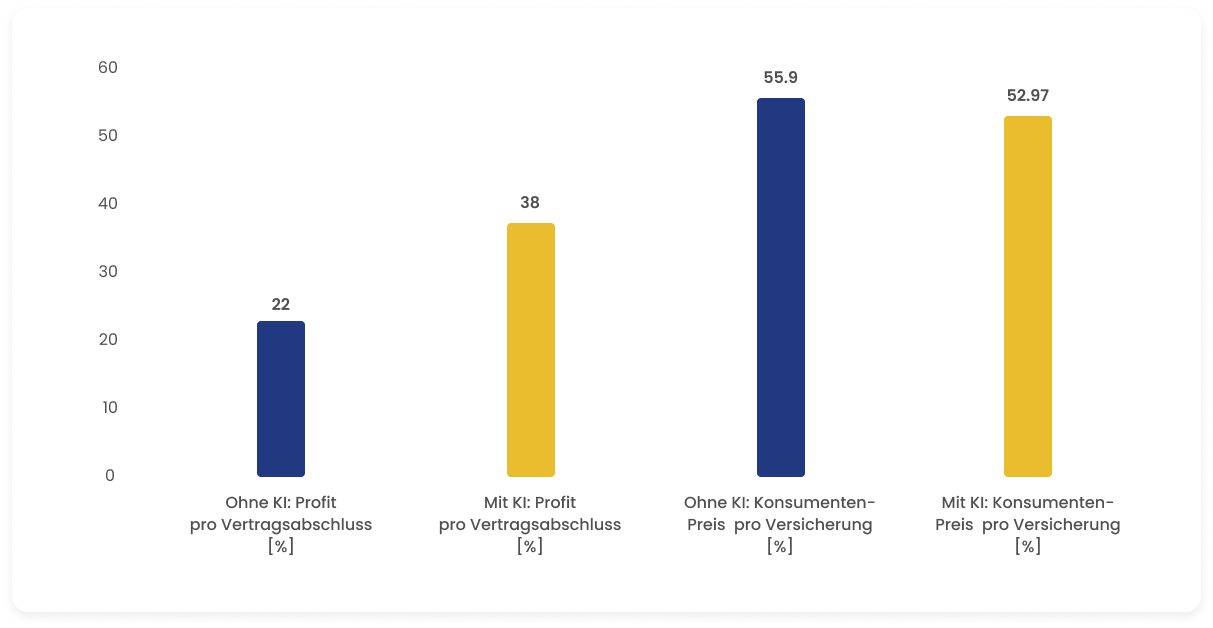Challenges
In the fascinating world of insurance, specifically travel insurance, HighPots has reached a milestone. Our Artificial Intelligence in the insurance industry is called RiskProphet AI. It has changed the way premiums are calculated and exceeded the expectations of insurance companies. Previously, travel insurance premiums depended on rigid statistical calculations, where actuaries relied on historical data to make risk assessments. These traditional approaches led to standard rates that often could not keep pace with the dynamic reality of the travel market. We started the project in 2018 with Signal Iduna in the field of travel insurance (trip cancellation and travel health insurance). The following challenges had to be overcome in establishing AI in the insurance industry:
The Following Challenges Had to be Overcome:
Acquisition of Travel Data
Validation of Data
Structuring and Parsing of Data
Relevance of Different Travel Data
Testing whether the AI System is Better than that of the Insurance Actuaries
Automation of Feedback and Evaluation of Cancellations and Claims
AI in the Insurance Industry - Approach
The HighPots ML components already changed the tariffication for a German insurance group in 2018. Meanwhile, the system has become more intelligent and comprehensive.
In real-time, the Artificial Intelligence in the insurance industry analyzes significantly more parameters than just the classics, such as travel duration, age of travelers, travel price, holiday country, or the travelers’ place of residence. Each individual traveler now receives a tailor-made insurance premium that accurately reflects their individual risks and needs. Ultimately, this not only ensures fair treatment of travelers but also financial benefits for insurance companies.
However, HighPots RiskProphet AI goes far beyond mere premium calculation – it constantly improves. Through continuous learning, not only from occurred claims but also from non-occurred scenarios, the AI constantly improves its forecasting capabilities in real-time. The result is precise real-time risk assessment, offering insurance companies an unprecedented level of risk calculation.
Results
And this is just the beginning. The next version of the AI product will not only focus on perfecting individual insurance rates but also on designing individual contract terms that match the individual insurance rates. This will make AI insurance tariffication not only more personalized but also more transparent and flexible. Furthermore, we will extend the AI to a neighboring insurance area, health insurance. The difference between travel health insurance and health insurance is less significant than it might seem at first glance.
The AI in the insurance industry was trained using data provided by GDS providers such as Amadeus, as well as data from insurance companies. The HighPots AI is currently being tested at a Japanese insurance company.
The initial results are promising. The contact person for this product is our Head of Research and Development, Rüdiger Off (ruediger.off@highpots.com).
Travel Insurance - Profits for Insurance Companies and Consumers before and after AI Implementation

Analyzed Number
100 000
Type of Travel
Package tour
Age of Travelers
between 40 and 60 years
Type of Insurance
Travel insurance per holiday
Number of Insurance Companies
5 different insurance companies
AI Environments
TensorFlow with continuous real-time learning (HighPots AI Open Source Cloud)
Surprising for Insurance Groups
Age is a crucial parameter, but that doesn't mean the oldest people are the biggest cost drivers.
Insurance Rates
Comparable insurance benefits in travel health and trip cancellation insurance across all 5 insurance companies

Michael Berlin
Conclusion
- We now have proof that actuarial science behaves similarly to meteorology: statistical statements from well-trained expert systems (AI) lead to better risk assessment and thus to more financial returns for insurance companies than traditional actuarial science. It is important that the AI can continuously participate in and learn from real-time sales and claims occurrences, i.e., the actual insurance business. Not only from a legal perspective are manual intervention options useful, even if they may never be used. For this purpose, automated thresholds that enable an alarm and associated manual intervention must be implemented. Artificial intelligence in the insurance industry offers increased revenue for insurance companies and potential savings for policyholders. Let us work together to design and scale AI in your insurance company.

